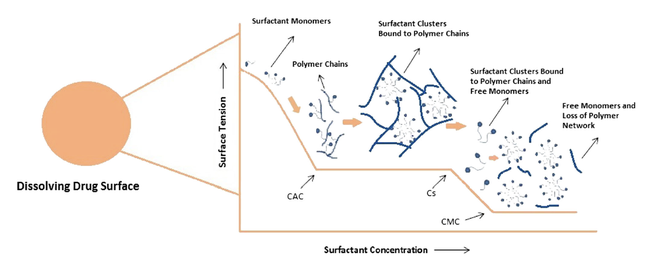- Home
- Blog
- News
- Basics
- Sources
- Agencies, Regulatory & Organisations
- CERSI Excipients Browser
- Excipient Report
- Excipient DMF List
- EXCiPACT Certified Companies
- Excipient Documentation
- Excipient EINECS Numbers
- Excipient E-Numbers
- FDA Inactive Ingredient List
- FDA GRAS Substances (SCOGS) Database
- IPEC Americas
- USP - U.S. Pharmacopeia
- Definitions
- Whitepapers / Publications
- Supplier
- Services
- Media
- Events
- 1st pharmaexcipients Poster Award
- Event Calendar
- Events featured by pharma-excipients
- 4th Annual Formulation & Drug Delivery Congress
- DDF Summit
- ExcipientFest Americas
- ExcipientFest Asia
- Global CompliancePanel
- International Conference and Exhibition on Pharmaceutics & Novel Drug Delivery Systems
- Formulation & Drug Delivery USA Congress
- Laboratory Medicine 2018
- Making Pharmaceuticals Europe
- Making Pharmaceuticals Exhibition
- Pharma Integrates
- PharmaExcipients China @CPhI China
- TTC Technology Training Center
- Jobs
- Online Sourcing
- Contact
04. October 2018
n recent years there has been a growing interest in solid lipid-based systems, particularly in solid lipid microparticles (SLMs); however, only very few studies deeply investigated the dissolution behaviour of orally delivered-SLMs. The present study provides new insights about the release performance in different gastrointestinal fluids of SLMs containing a freely water soluble drug (caffeine, as BCS class I drug). Three different formulations of SLMs were prepared by spray congealing using...
02. October 2018
The formulation of amorphous solid dispersions (ASDs) is an effective way to improve the bioavailability of poorly water-soluble active pharmaceutical ingredients (APIs). The combination of an amorphous state of the drug and the presence of crystallization-inhibiting polymers retains a high amount of dissolved API over time. ASDs with ketoconazole and different polymers were manufactured by spray drying and their characteristics as well as performance were analyzed. Dissolution tests with a...
29. September 2018
Appropriate lubrication is important in tablet manufacturing as it lowers punch sticking propensity and protects tooling by reducing friction between die wall and tablet during tablet manufacturing. Most commercial lubricants negatively impact tabletability and dissolution. A delicate balance is usually attained by trial and error to identify the optimal level of lubricant in a tablet formulation. In this work, we have evaluated the effectiveness of sodium lauryl sulfate (SLS), a surfactant, as...
10. September 2018
Disintegration is a physical process related to the mechanical breakdown of a tablet or granulate particle into smaller particles. This review investigates disintegration mechanisms, pharmacopeial use of the disintegration test and scientific studies showing its utility and potential as a pharmaceutical performance test. With a proper dosage form understanding and demonstration/justification of the mechanistic details of drug dissolution from a dosage form, dissolution testing might be replaced...
30. August 2018
Hard gelatin capsule (HGC) shells are widely used to encapsulate drugs for oral delivery, but are vulnerable to gelatin cross-linking, which can lead to slower and more variable in vitro dissolution rates. Adding proteolytic enzymes to the dissolution medium can attenuate these problems, but this complicates dissolution testing and is only permitted by some regulatory authorities. Here, we expand the scope of our previous work to demonstrate that canisters containing activated carbon (AC) or...
29. August 2018
Conversion of liquid and semisolid lipids into free flowing powders is an advantageous technique, as the carriers display high surface area, strong adsorption capacity, ease of processing, and ability to generate lipid loaded free flowing powders which can be converted to solid dosage forms like tablets and capsules. A combination of density, adsorption capacity and desorption is found to be of importance in the selection of the right adsorbent. Adsorbents like magnesium aluminium silicates...
13. August 2018
Surfactants are commonly incorporated in conventional and enabled formulations to enhance the rate and extent of dissolution of drugs exhibiting poor aqueous solubility. Generally the interactions between the drug and excipients are systematically evaluated, however, limited attention is paid towards understanding the effect of interaction between functional excipients and its impact on the performance of the product. In the current study, the effect of potential interaction between a nonionic...
08. August 2018
Telmisartan (TS) have developed for the treatment of hypertension as the angiotensin II receptor blocker. TS belongs to class II drug in BCS classification and it has good permeability. But, it is poorly water soluble. Biological half-life of TS is 24 hours because it has not good bioavailability (only 42∼58%). The absorption of a drug is often limited by dissolution rate. Drug dissolution is important factor to the therapeutic efficacy of a medicine. Therefore, TS requires alternative...
30. July 2018
Drug nanoparticles embedded in a dispersant matrix as a secondary phase, i.e., drug-laden nanocomposites, offer a versatile delivery platform for enhancing the dissolution rate and bioavailability of poorly water-soluble drugs. Drug nanoparticles are prepared by top-down, bottom-up, or combinative approaches in the form of nanosuspensions, which are subsequently dried to prepare drug-laden nanocomposites. In this comprehensive review paper, the term “nanocomposites” is used in a broad...
20. June 2018
Itraconazole is a fungicide drug which has low bioavailability due to its poor water solubility. Amorphous solid dispersion (ASD) is a tool that has the potential to greatly increase the dissolution rate and extent of compounds. In this work, the dissolution of tablets containing the ASD of itraconazole with either hydroxypropyl methylcellulose (HPMC) or vinylpyrrolidone-vinyl acetate copolymer (PVPVA) was compared in order to find a formulation which can prevent the drug from the precipitation...










